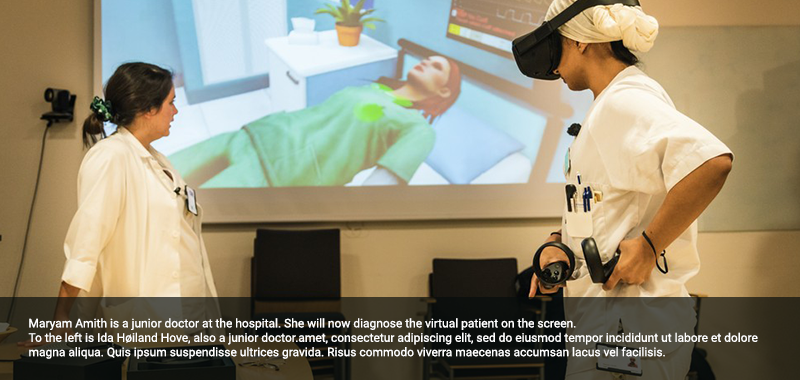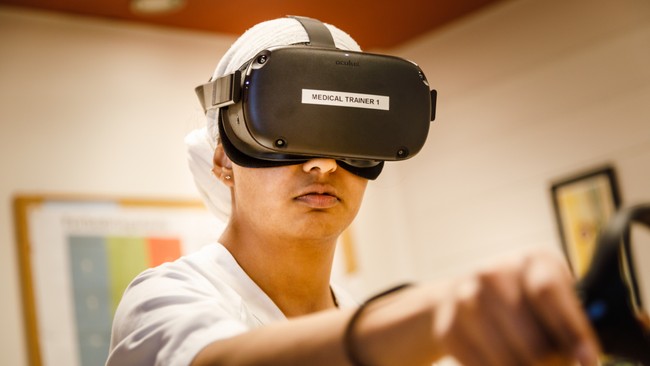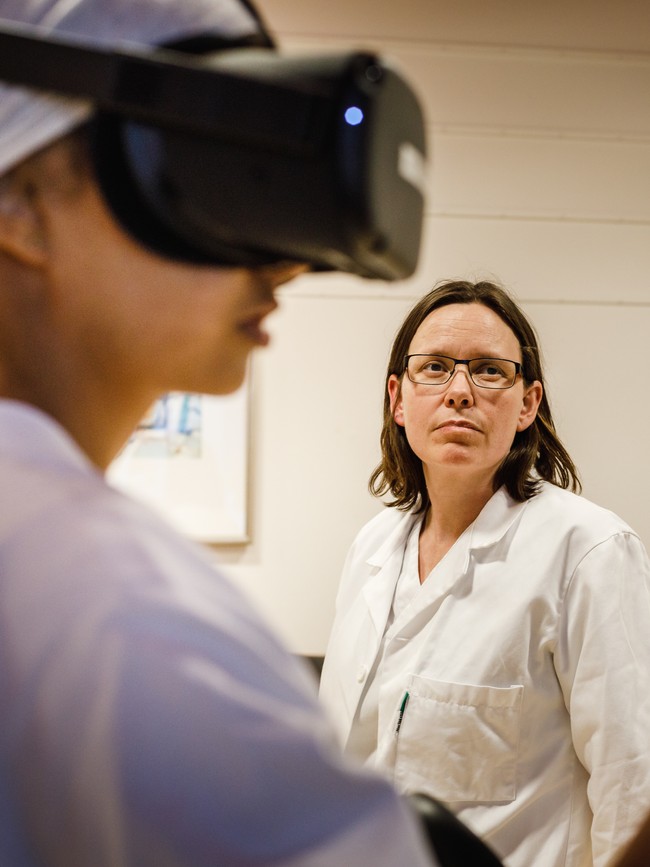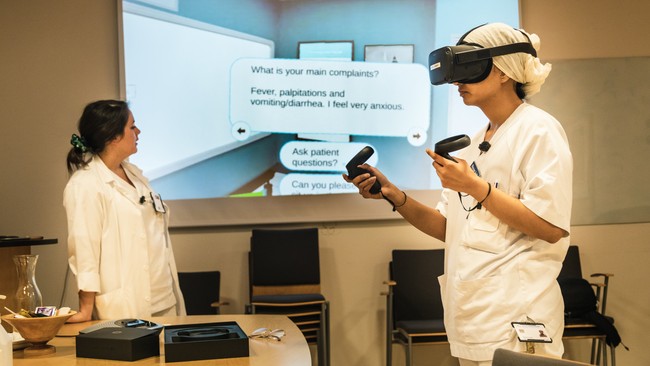
Young junior doctors will receive better training in detecting and treating rare diseases. The key is virtual emergency rooms.
This is much better than anything else I have tried, says Maryam Amith. She recently graduated from medical school, and is currently working as a junior doctor at Stavanger University Hospital.
Amith is wearing VR glasses. She moves around in an empty training room at the hospital, with a large screen on the wall.
On screen, the supervisor sees the same thing as Amith sees.

Through the glasses, Maryam Amith is admitted to a virtual emergency room at the hospital. PHOTO: ODD RUNE KYLLINGSTAD / NRK, the supervisor sees the same on screen as Amith sees through the VR glasses.
Obtains information
Here the junior doctor accesses the patient records; she takes blood samples, can ask the patient questions, listen to the heart and lungs, order an X-ray, take an ECG and perform other measurements.
Maryam Amith concludes that the patient has a high metabolism. She quickly receives a confirmation from the simulator that she has made the correct diagnosis.

Camilla Normand hopes that VR training can be extended to include more experienced doctors and medical students. PHOTO: ØYSTEIN OTTERDAL / NRK
“Almost like playing PlayStation, this?”
“Ha-ha, yes, but with a lot more performance anxiety”, says Amith.
“Usually, junior doctors need to treat real patients to learn what they need”, says Camilla Normand. She is Head of the Internal Medicine Training Program, and Project Manager for “Medical Trainer” at Stavanger University Hospital.
“It is especially challenging for newly qualified doctors to gain enough experience with rare and serious diseases. Now they are better prepared to make good assessments”, Normand says.
Realistic data
The IT Company Bouvet has developed the virtual training together with the hospital.
Bouvet has received data from Stavanger University Hospital for each scenario. For example, there may be added heart sounds and something wrong with the blood values, while the lung sounds and X-rays are normal.

While attempting to make a diagnosis, the doctor can ask the virtual patient questions. PHOTO: ODD RUNE KYLLINGSTAD / NRK
“Even though the VR training is not exactly like treating a real patient, it is a great way to learn to diagnose rare disease that you might not get a chance to see in real-life. The alternative would have been to read about them, or learn about them in a lecture” says Maryam Amith.
Will expand VR training
The project covers not only education, but also research.
16 junior doctors are participating. Of these, half will receive VR training, while the other eight will complete traditional training. The goal is to uncover which teaching method provides the best results, and the conclusion will be ready next year.
“Together with Bouvet, we hope to be able to expand the number of cases so that we can also use VR training for medical students and more experienced doctors”, says Camilla Normand.
This article was published on nrk.no by Erlend Frafjord & Øystein Otterdal. It describes a virtual reality project that SAFETY partner University of Stavanger jointly initiated.
Translated with permission from nrk.no article.



